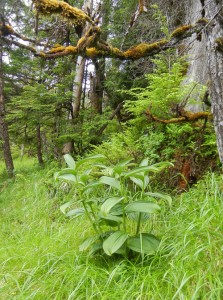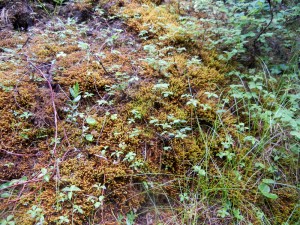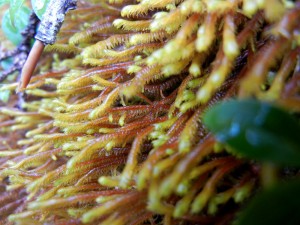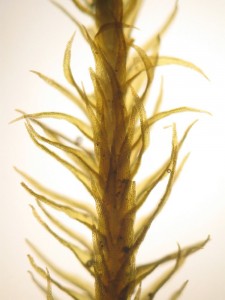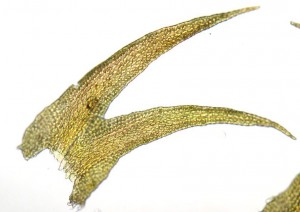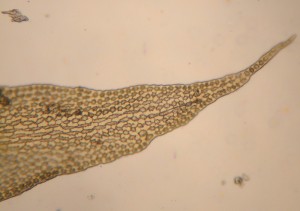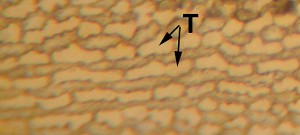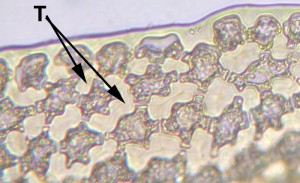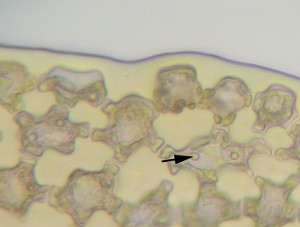(= Herberta aduncus)
Habitat:
The habitat of Herbertus aduncus is diverse. You can find it in peatlands, foggy forests, open tundras, epiphytes on coniferous trees, or on rock surfaces. In this picture it is in the boughs above Veratrum viride (green false hellebore)
On a bank on the edge of the forest:
Gametophyte:
Overall Structure:
Herbertus aduncus may form large rounded turfs or masses on the substratum.
Individual shoots of Herbertus aduncus are rusty brown to reddish brown and appear moss-like.
Leaf Structure:
The lateral and underleaves are almost identical. Leaves are deeply equally bilobed, and are transversely inserted (at right angles to the axis of the stem).
The cells of the vitta are elongate while the cells of the lamina are isodiametric.
Elongate cells of the vitta have extensive cell wall thickenings called trigones (T).
The lamina cells are isodiametric, but also have irregularly shaped trigones (T).
Complex oil bodies (indicated with an arrow) are not lobed.
Rhizoids:
Rhizoids are unicellular and smooth.
Male Gametophyte:
Antheridia are enclosed in protective structures.
Female Gametophyte:
Archegonia are acrogynous and protected in enclosed structures.
Sporophyte
The young sporophyte is protected by the perianth. There is one sporophyte per perianth.
Sporangium:
The sporangial wall, in leafy liverworts, is two to ten layers thick.
Sporangia have four lines of dehiscence. Elaters are long and move hygroscopically, aiding in the dispersal of spores. Further, elaters nourish spores and are diploid.

